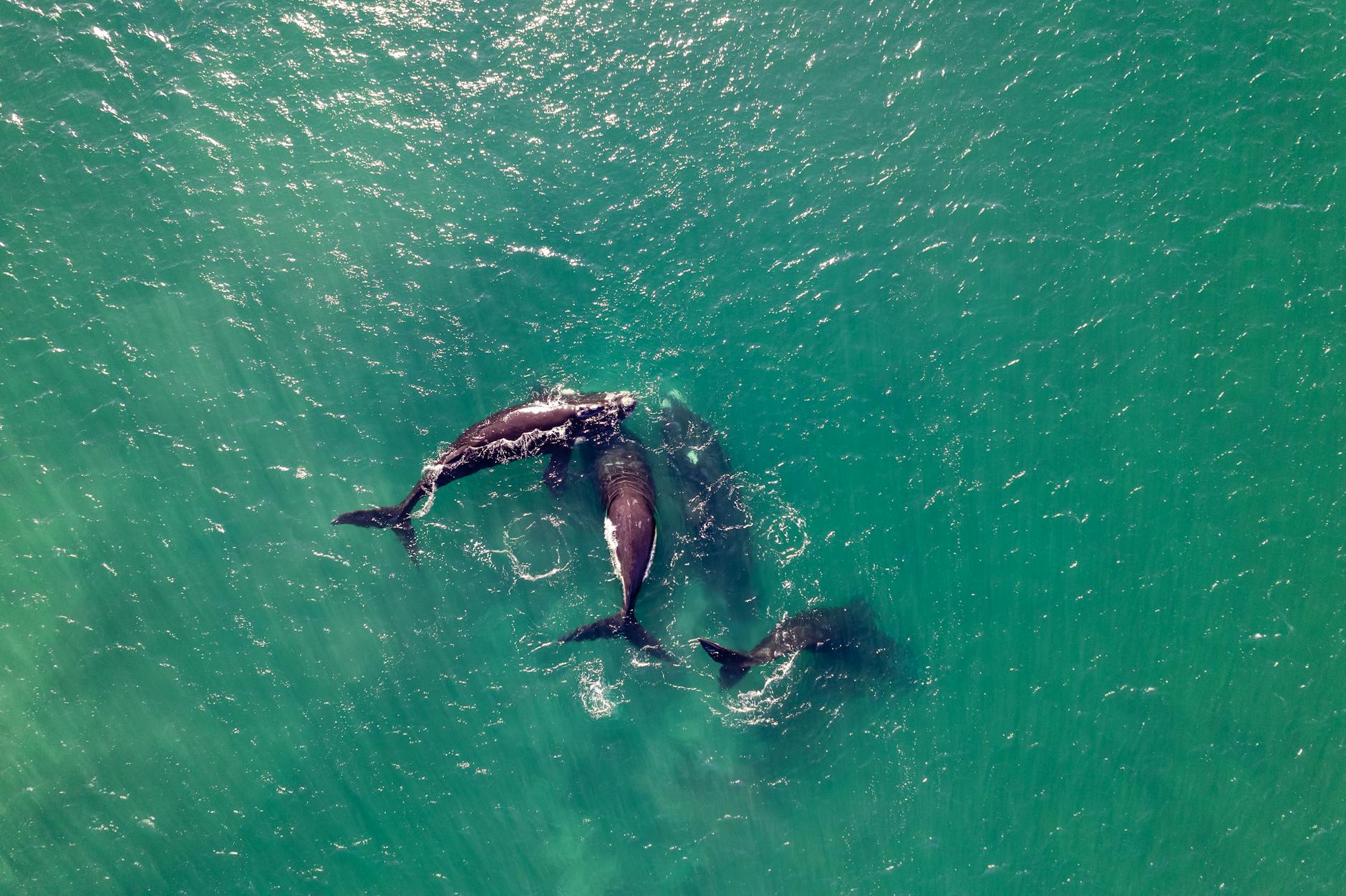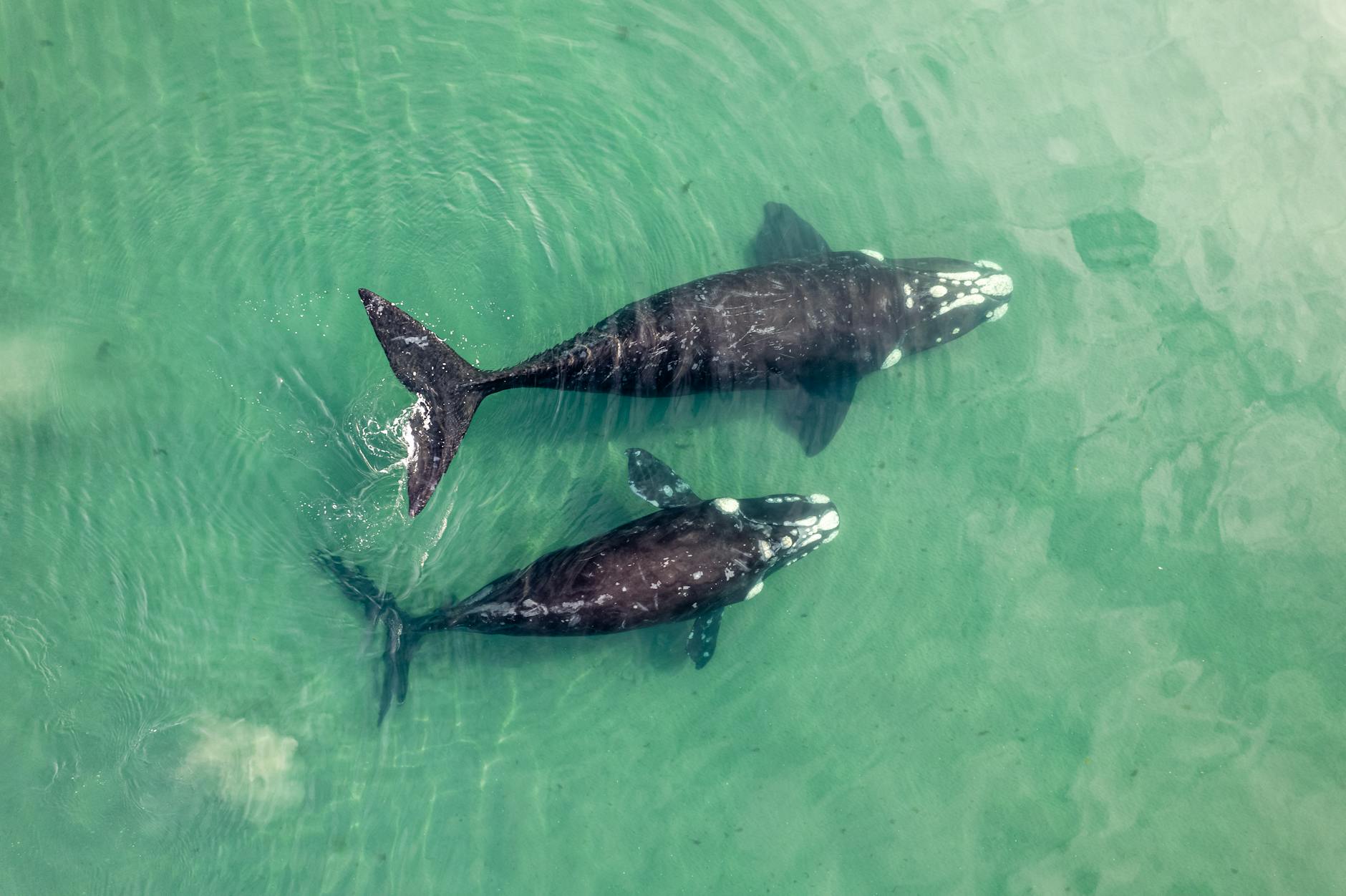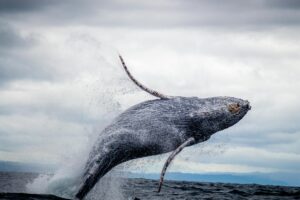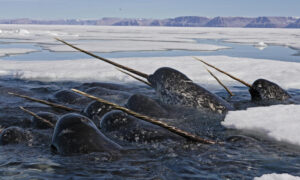The Blue Whale is the largest known animal on earth! This fact sheet will provide some useful information about why are blue whales endangered animals?
Why Are Blue Whales Endangered Animals?
Blue whales, the largest animals on Earth, are facing a troubling reality. Once thriving in oceans worldwide, their numbers have plummeted over the past century. Despite being legally protected today, blue whales remain endangered. Let’s dive into the reasons behind their endangered status, what endangers them today, and why saving them is essential for ocean health.
A Brief Overview of Blue Whales
Blue whales (Balaenoptera musculus) are majestic marine mammals that can grow up to 100 feet in length and weigh as much as 200 tons. These gentle giants feed primarily on krill, consuming up to 4 tons per day during feeding seasons. Blue whales play a vital role in marine ecosystems by regulating the population of smaller organisms and contributing to the nutrient cycle.
One Blue Whale can consume as much as 4 tonnes of krill (shrimp-like crustaceans) per day. Blue Whales don’t have teeth; instead they eat by sifting seawater through their mouth to catch krill.
The seawater is filtered through hundreds of giant sieves in their mouth called baleen plates. Blue Whales can live for up to 90 years and carry lice that live and feed on loose skin.
Description
Blue Whales can grow up to 33 metres long and weigh as much as 180 tonnes. Their tongues alone can weigh as much as an elephant. Females are generally bigger than males.
Blue Whales are silver-grey to dark grey in colour, with light grey spots across the skin which appears bright blue underwater.
They have a small dorsal fin on their back and throat pleats (grooves) from the lower jaw to the belly. Blue Whales breathe air from their blow hole near the top of the head in a powerful burst.
They can blow water up to 9 metres into the air and be heard 3 -5 km away.
Diet
The main diet of the Blue Whale is krill but they also consume some small fish and squid. They generally feed in the summer months in sub Antarctic and Antarctic waters but can be seen feeding off the western Victorian coast near Portland. To eat, they take large gulps of water containing krill, discarding the water through the baleen plates.
Breeding
Blue Whales reach sexual maturity at around 7-10 years of age although observations of Blue Whales in the act of mating are rare.
Males are known to compete for mates and use very loud, high frequency sounds to attract females. Females give birth to a single calf after a gestation period of 11 months. Females are capable of giving birth every 2-3 years. Calves can weigh up to 4 tonnes and are 6-7 metres long.
The newborn will immediately swim to the surface for its first breath with the mother aiding it with her flippers. Calves can swim unaided within half an hour of being born. Calves are fed milk for approximately 7-8 months before being weaned. During the nursing period, the calf can drink up to 400 liters of milk per day.
Habitat
Blue Whales are found throughout the world’s oceans. In the summer months, they tend to live in sub Antarctic and Antarctic waters. In the winter months, they migrate to breeding grounds in warmer tropical waters.

Historical Threats: The Whaling Era
The biggest contributor to the endangerment of blue whales was commercial whaling. Starting in the late 19th century, whaling industries hunted blue whales for their valuable oil, meat, and blubber.
Technological advances in whaling techniques, such as steam-powered ships and explosive harpoons, allowed hunters to target even the largest whales.
By the mid-20th century, blue whale populations had dropped drastically. Before commercial whaling, an estimated 200,000 to 300,000 blue whales roamed the oceans.
After decades of exploitation, their numbers fell by nearly 90%, leading to their classification as endangered. International whaling bans have since been established, but blue whale populations have struggled to recover fully.
Current Threats to Blue Whale Populations
While whaling no longer poses a direct threat, blue whales face several other dangers. These challenges impact their ability to thrive and recover their populations.
- Ship Strikes Blue whales often encounter large vessels, especially in busy shipping lanes. Due to their massive size, these whales don’t have the agility to avoid fast-moving ships, leading to fatal collisions. Ship strikes cause severe injuries or death to blue whales. In areas with heavy maritime traffic, this risk increases significantly, making it a persistent danger to these endangered animals.
- Noise Pollution Blue whales communicate using low-frequency sounds, which can travel long distances underwater. However, noise pollution from ships, military exercises, and oil drilling disrupts their communication. Loud sounds can mask their calls, making it hard for blue whales to find mates, locate food, or navigate safely. Noise pollution may also cause stress in whales, affecting their behavior and health.
- Climate Change Climate change impacts blue whale populations in several ways. Warming ocean temperatures influence the distribution of krill, the primary food source for blue whales. Changes in water temperature can lead to krill moving to different regions, forcing blue whales to travel farther to find food. Additionally, melting ice and shifting ecosystems disrupt the delicate balance of marine habitats. Climate change also leads to more extreme weather, affecting whale migration routes and breeding grounds.
- Pollution and Contaminants Oceans are filled with pollutants, including plastics, heavy metals, and chemical waste. Blue whales can ingest microplastics and toxins that accumulate in their bodies, leading to health issues. These pollutants can weaken their immune systems and reduce their reproductive success. Contaminants also affect krill populations, impacting the entire food chain that blue whales depend on.
- Fishing Gear Entanglement Fishing gear left in the oceans can trap blue whales, entangling them in ropes and nets. When entangled, whales struggle to swim and dive, leading to exhaustion, injury, or even death. Discarded fishing gear, also known as ghost gear, is a common hazard in many marine environments. Entanglement affects several species, including endangered blue whales.
How Climate Change Exacerbates Threats to Blue Whales
Climate change influences almost every aspect of a blue whale’s life. As ocean temperatures rise, their feeding grounds shift, reducing access to their main food sources. Acidification, caused by higher carbon dioxide levels, affects the health of krill populations and disrupts the marine food web. Blue whales rely on krill for survival, so any negative impact on this food source directly affects their ability to thrive.
Melting sea ice in polar regions also affects the habitat of many marine species. Although blue whales do not live directly near the ice, their migration patterns intersect with areas affected by ice melt. Climate-induced changes in ocean currents and water salinity may further impact blue whale migration routes, breeding grounds, and food availability.
Why Are Blue Whales Important to the Ecosystem?
Blue whales contribute significantly to ocean health. By consuming large quantities of krill, they help maintain a balanced food web.
Their waste also plays a key role in the nutrient cycle, as it provides essential nutrients like iron to support phytoplankton growth. Phytoplankton, in turn, produces oxygen and absorbs carbon dioxide, contributing to a healthy marine ecosystem and combating climate change.
If blue whales were to vanish, the effects could ripple through the entire ecosystem, impacting biodiversity and the stability of marine food chains. Protecting blue whales is essential not only for preserving a unique species but also for maintaining oceanic balance.
Conservation Efforts to Protect Blue Whales
Organizations, governments, and scientists are working together to protect blue whales. Here are some key initiatives:
- Ship Route Alterations Conservation groups and maritime authorities are collaborating to reduce ship strikes by rerouting shipping lanes away from blue whale habitats. In regions with high blue whale activity, ships are encouraged to slow down to give whales a better chance to avoid collisions.
- Marine Protected Areas (MPAs) Many countries have established MPAs to safeguard critical whale habitats. In these zones, activities such as commercial fishing and oil drilling are restricted, reducing human interference in blue whale environments. MPAs provide safe areas for blue whales to feed, mate, and migrate without threats from human activity.
- Noise Reduction Regulations To combat noise pollution, several initiatives aim to limit noise levels in sensitive marine habitats. Technologies like quieter ship engines and regulations on military sonar exercises help to reduce noise pollution, giving blue whales a better environment for communication and navigation.
- Stricter Pollution Controls Reducing plastic waste and controlling chemical pollutants helps protect the marine ecosystem. International agreements aim to reduce plastic waste in the oceans, and stricter controls on chemical pollutants can lower the risk of toxin buildup in marine life.
- Monitoring and Research Researchers continuously study blue whale populations to understand their behavior, migration patterns, and threats. Satellite tracking and acoustic monitoring provide insights into their habitats, allowing conservationists to create targeted protection measures.
- Climate Action Addressing climate change on a global scale is essential for blue whale conservation. Reducing carbon emissions, protecting marine habitats, and supporting international climate agreements are critical steps in mitigating climate-related threats to blue whales and other marine species.
How Individuals Can Help
Protecting blue whales requires collective action, but individual efforts matter too. Supporting organizations dedicated to marine conservation, reducing plastic waste, and advocating for climate action can make a difference.
Choosing sustainable seafood, donating to conservation groups, and spreading awareness about the importance of blue whales are simple ways to contribute to their survival.
The Road Ahead: Can We Save Blue Whales?
Despite the challenges, there is hope for blue whale recovery. With continued conservation efforts and a commitment to addressing climate change, we can protect these magnificent creatures.
Blue whale populations show signs of slow recovery in some regions, demonstrating the effectiveness of international protections and conservation measures.
Yet, much work remains to ensure their survival. By understanding why blue whales are endangered and taking action to mitigate these threats, we can pave the way for a future where blue whales thrive once more in the oceans.
Final Thoughts
Blue whales face many threats, from ship strikes and pollution to the far-reaching effects of climate change. Each of these factors complicates their chances of recovery. However, our actions can help secure a better future for them.
The survival of blue whales is not only crucial for biodiversity but also for maintaining healthy ocean ecosystems. Protecting them is a testament to our commitment to preserving the natural world for generations to come.



